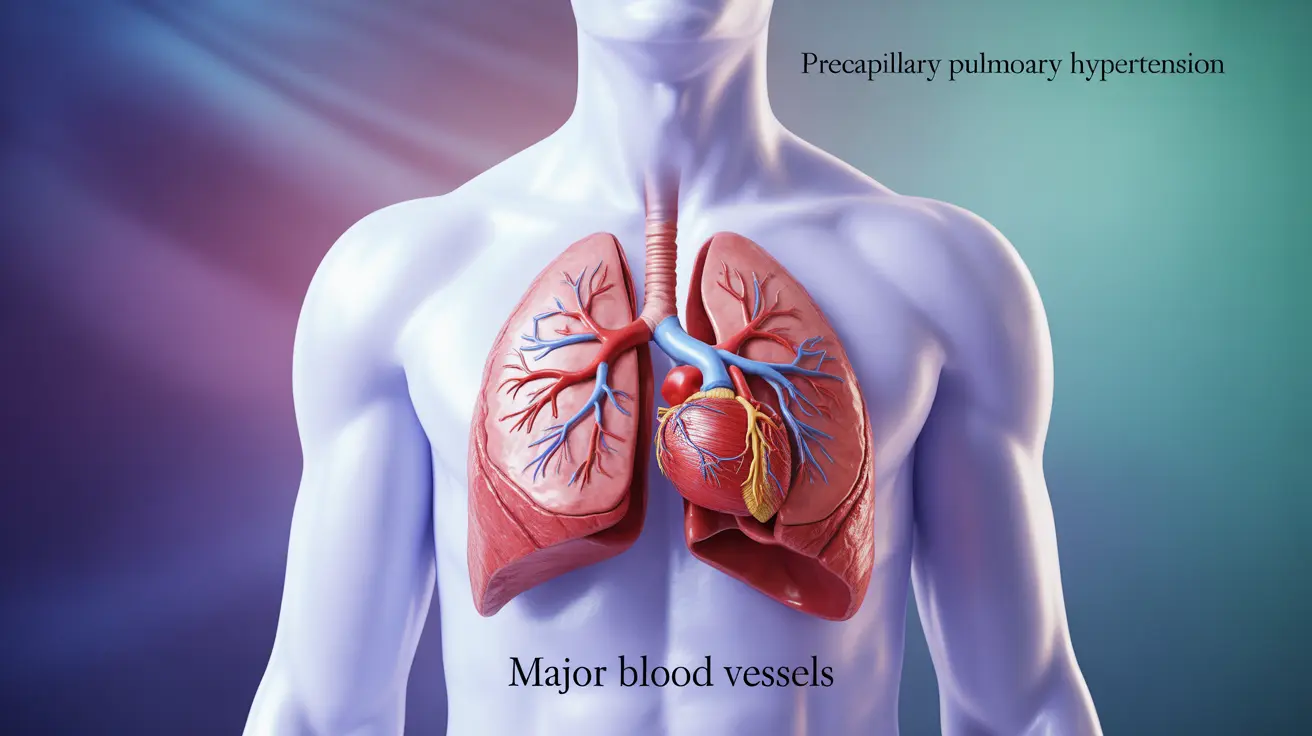Precapillary pulmonary hypertension is a serious cardiovascular condition characterized by increased blood pressure in the pulmonary arteries before they reach the heart's left side. This condition affects the blood vessels in the lungs, making it harder for the heart to pump blood effectively through the pulmonary circulation.
Understanding this condition is crucial for proper diagnosis and management, as it differs significantly from other forms of pulmonary hypertension and requires specific treatment approaches. Early recognition of symptoms and prompt medical intervention can significantly improve outcomes for patients.
What is Precapillary Pulmonary Hypertension?
Precapillary pulmonary hypertension occurs when the small arteries in the lungs become narrowed or blocked, increasing resistance to blood flow. This increased resistance forces the heart's right ventricle to work harder to pump blood through the lungs, eventually leading to right heart strain and potential failure if left untreated.
Common Symptoms and Warning Signs
The symptoms of precapillary pulmonary hypertension often develop gradually and may be mistaken for other conditions. Key indicators include:
- Shortness of breath, especially during physical activity
- Persistent fatigue
- Chest pain or pressure
- Dizziness and fainting spells
- Swelling in the ankles and legs
- Irregular heartbeat
- Bluish tint to lips and skin
Risk Factors and Causes
Several conditions and factors can contribute to the development of precapillary pulmonary hypertension:
Medical Conditions
- Connective tissue disorders
- HIV infection
- Liver disease
- Congenital heart defects
- Blood clotting disorders
Environmental Factors
- High altitude exposure
- Certain medications and drugs
- Chronic lung diseases
- Sleep apnea
Diagnostic Process
Diagnosing precapillary pulmonary hypertension involves several steps and specialized tests:
- Right heart catheterization
- Echocardiogram
- Chest X-rays
- CT scans
- Pulmonary function tests
- Blood tests
Treatment Approaches
Treatment for precapillary pulmonary hypertension typically involves a combination of approaches:
Medications
- Vasodilators
- Endothelin receptor antagonists
- Phosphodiesterase inhibitors
- Prostacyclin analogues
Lifestyle Modifications
- Regular monitored exercise
- Dietary changes
- Stress management
- Smoking cessation
Additional Therapies
- Oxygen therapy
- Anticoagulation treatment
- Diuretics when needed
Frequently Asked Questions
What are the main symptoms of precapillary pulmonary hypertension that I should watch for? The main symptoms include progressive shortness of breath, fatigue, chest pain, dizziness, fainting spells, and swelling in the legs and ankles. These symptoms typically worsen with physical activity.
How is precapillary pulmonary hypertension diagnosed and distinguished from other types of pulmonary hypertension? Diagnosis requires right heart catheterization to measure pulmonary pressures directly. Other tests like echocardiograms, chest imaging, and pulmonary function tests help differentiate it from other forms of pulmonary hypertension.
What causes precapillary pulmonary hypertension and which conditions increase the risk? Common causes include connective tissue disorders, HIV, liver disease, congenital heart defects, and chronic lung diseases. Risk factors include certain medications, high altitude exposure, and genetic predisposition.
What treatment options are available for managing precapillary pulmonary hypertension? Treatment options include various medications like vasodilators and endothelin receptor antagonists, lifestyle modifications, oxygen therapy, and in some cases, surgical intervention. Treatment plans are typically individualized based on the specific cause and severity.
How does precapillary pulmonary hypertension differ from postcapillary pulmonary hypertension in terms of symptoms and treatment? Precapillary pulmonary hypertension affects the vessels before they reach the left heart, while postcapillary affects the vessels after the left heart. Treatment approaches differ, with precapillary focusing on pulmonary vessel dilation and postcapillary addressing underlying left heart conditions.




